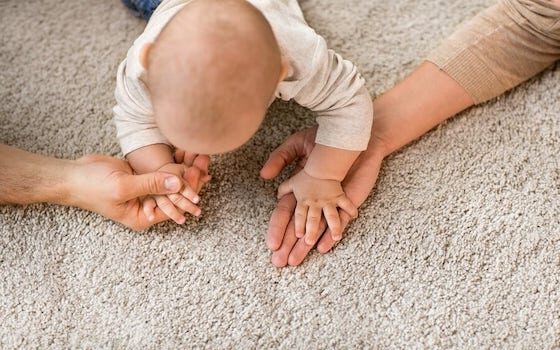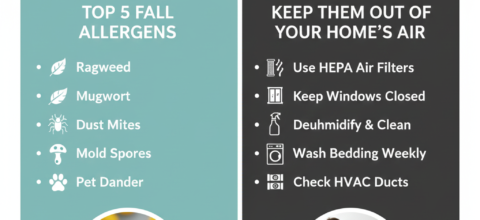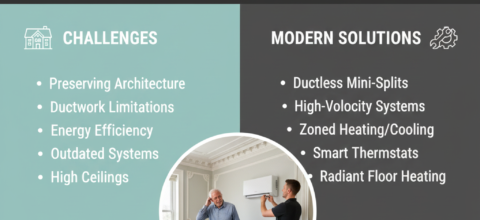Air Pollution Effects On Infants
WHAT DO YOU NEED TO KNOW ABOUT AIR POLLUTION EFFECTS ON INFANTS?
The air pollution effects on infants are of grave concern, as infants are one of our most vulnerable age groups. Of course, air pollution effects every member of the population, but infants and young children are at the highest risk for negative health effects. Kidsdata.org says that pollutants in the air put children at significant risk of developing serious illnesses because they “breathe more air relative to their size, compared to adults, and thus experience greater proportionate exposure to chemicals.” Fetuses are also at the greatest risk of adverse effects from pollution because their bodies and organs are not fully developed.
The National Institute of Health (NIH) also reports that air pollution can create or worsen diseases and disorders such as asthma, cardiovascular disease, premature births and even death. In 2013 the World Health Organization concluded that outdoor air pollution is a carcinogen to humans.
WHAT CONSTITUTES AIR POLLUTION?
The NIH defines air pollution as “a mixture of natural and man-made substances in the air we breathe. It is typically separated into two categories: outdoor air pollution and indoor air pollution.”
Writing specifically of indoor air pollution NIH defines it, saying that it “involves exposures to particulates, carbon oxides, and other pollutants carried by indoor air or dust. In some instances, outdoor air pollution can make its way indoors by way of open windows, doors, ventilation, etc.”
The Centers for Disease Control (CDC) also reports about the air pollution effects on infants as well as what air pollution is. Air pollution is particulates in the air that come from two different sources labeled primary and secondary. Primary air pollution is forest fires, power plants, and industrial processes. Secondary air pollution is coal-fired power plants and exhaust from cars. The CDC writes that these particulates play a role in the development of serious illnesses and death because they are small enough to inhale deep into the lungs where they are absorbed and wreak havoc on your lungs, heart and blood vessels.
WHAT ARE THE INDOOR AIR POLLUTION EFFECTS ON INFANTS?
The indoor air pollution effects on infants are concerning and something to keep an eye on. Infants and even fetuses are at a high risk for everything from premature birth to the development of asthma and even death. Outdoor air pollution is always something to pay attention to as well, as the outdoor air pollution effects on infants can be just as damaging, especially when the outdoor air pollution is at an elevated level and entering the home.
Outdoor air pollution comes in when you leave the windows open for a breeze, come in from outside, or let the family pet inside. Indoor air pollution develops in the home from your household chemicals (think bleach and ammonia), building materials (renovations and remodeling), gases (carbon monoxide and radon), allergens (mold, dust mites, pollen and pet dander) and tobacco smoke (assuming there’s a smoker in the home).
HOW DO I LIMIT AIR POLLUTION EFFECTS ON INFANTS?
If you’re looking to limit air pollution effects on infants, there’s not much you can do to stop exposure to outdoor air pollution if you live in a smog-filled city like Los Angeles. You can however, reduce the amount that enters the home as well as reduce the build-up of indoor air pollution.
Some tips for reducing the air pollution effects on infants include:
- Make sure your home is properly ventilated. Proper ventilation is important in any home, no matter the city you live in. It can help reduce the severity of chemical smells, allergens, and even radon build-up.
- Clean your home regularly. Try different dusting techniques to remove particulate build-up on the surfaces in your home. Consider dry mopping high traffic areas once a day, as these are the areas where most of the contaminants are carried in and on.
- Switch out your chemicals. Switch to all-natural chemicals, and ditch the harmful ones. There are plenty of brands who are making a stand against dangerous chemicals and their additives. They are harmful to your whole family’s health but contribute to the air pollution effects on infants in a dangerous way.
- Pay attention to your building materials. Talk to your general contractor and make sure they are using the right materials in your new home, renovations or remodeling. Things like Chinese dry wall are huge red flags of a future indoor air pollution problem. There are also specialized building materials you can consider, like radon-resistant materials that help prevent the dangers of radon build-up.
- Quit smoking. If someone in the home is a smoker, quitting is the best thing they can do, both for their health as well as the health of the entire household. Also, consider installing an air purifier and working on other best techniques for purifying air from smoke.
- Clean your air ducts. Clean air ducts go a long way toward limiting the air pollution effects on infants. All of the indoor and outdoor particulates in the home are being taken in and recirculated by your HVAC system an average of 5 to 7 times a day. These particulates will build up inside the HVAC system year after year until the air ducts are cleaned. Find a company that uses the National Air Duct Cleaner’s Association’s(NADCA) strict parameters for cleaning and schedule a cleaning every 3 to 5 years. Also, make sure you are replacing your filters every three months or whatever time frame is listed on the packaging of your filter brand.
Call 800-482-8224 to schedule an appointment with an Amazon Air Duct Cleaning Professional today!










